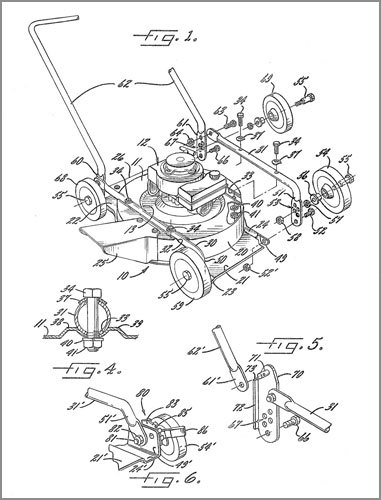Recently, I had to order a part for an electric lawnmower. I enjoyed looking at the exploded view (similar to the one above) on the manufacturer's web site. What struck me about it was that so many of the parts were generic screws, bolts, springs, wheels, and so on. With a bit of ingenuity, I'm sure someone (not me!) could track down generic electric motors, mower blades, and other more specialized parts, and build their very own do-it-yourself lawn mower.
There are just a few problems with this idea.
- It would cost a lot more than the original mower
- It would take a lot of time that could possibly be used for better purposes
- It wouldn't work and you'd end up with an expensive pile of junk to discard.
Why am I yammering on about exploded views of lawn mowers? Because the idea of assembling lawn mowers from generic parts is a lot like what all too many struggling schools do in the name of whole school reform.
In education, the equivalent do-it-yourself idea using generic parts is the idea that if you choose one program for reading and another for behavior and a third for parent involvement and a fourth for tutoring and a fifth for English learners and a sixth for formative assessment and a seventh for coaching, the school is bound to do better. It might, but this piecemeal approach is really hard to do well.
The alternative to assembling all of those generic parts is to adopt a comprehensive school improvement model. These are models that have coordinated, well worked-out, well-supported approaches to increasing student success. Our own Success for All program is one of them, but there are others for elementary and secondary schools. After years of encouraging schools receiving School Improvement Grants (SIG) to assemble their own comprehensive reforms (remember the lawn mower?), the U.S. Department of Education finally offered SIG schools the option of choosing a proven whole-school approach. In addition to our Success for All program, the U.S. Department of Education approved three other comprehensive programs based on their evidence of effectiveness: Positive Action, the Institute for Student Achievement, and New York City's small high schools of choice approach. These all met the Department's standards because they had at least one randomized experiment showing positive outcomes on achievement measures, but some had a lot more evidence than that.
Comprehensive approaches resemble the fully assembled lawn mower rather than the DIY exploded view. The parts of the comprehensive models may be like those of the do-it-yourself SIG models, but the difference is that the comprehensive models have a well-thought-out plan for coordinating all of those elements. Also, even if a school used proven elements to build its own model, those elements would not have been proven in combination, and each might compete for the energies, enthusiasm, and resources of the beleaguered school staff.
This is the last year of SIG under the old rules, but it will continue in a different form under ESSA. The ESSA School Improvement provisions require the use of programs that meet strong, moderate, or promising evidence standards. Assembling individual proven elements is not a terrible idea, and is a real improvement on the old SIG because it at least requires evidence for some of the parts. But perhaps broader use of comprehensive programs with strong evidence of effectiveness for the whole school-wide approach, not just the parts, will help finally achieve the bold goals of school improvement for some of the most challenging schools in our country.

